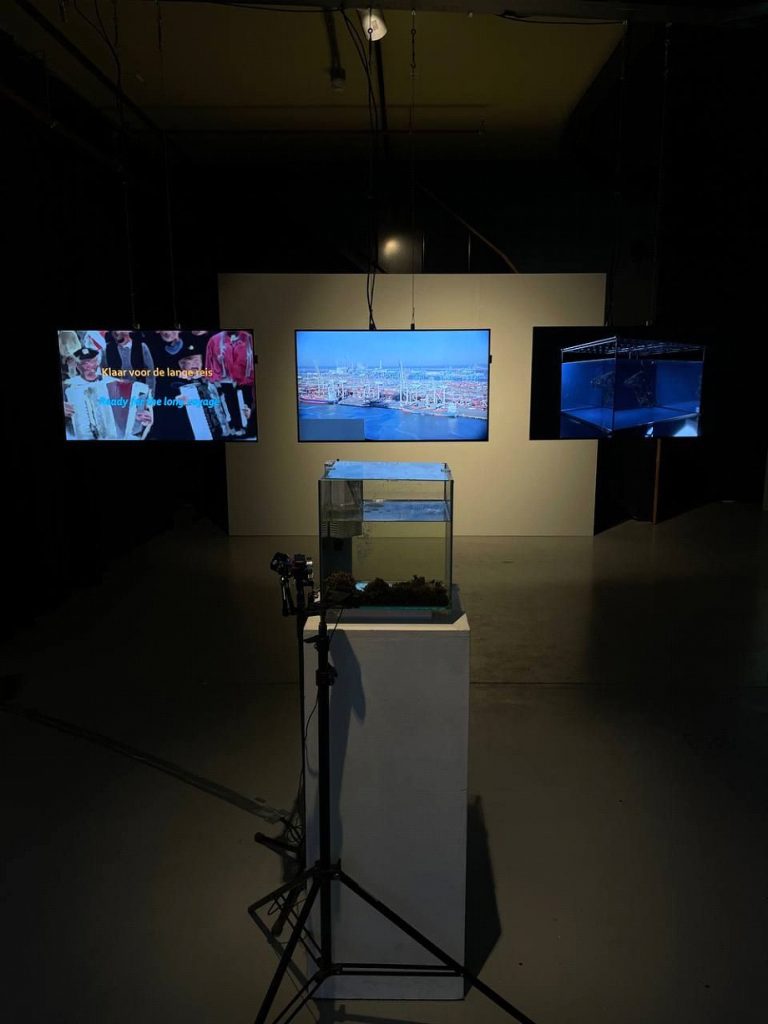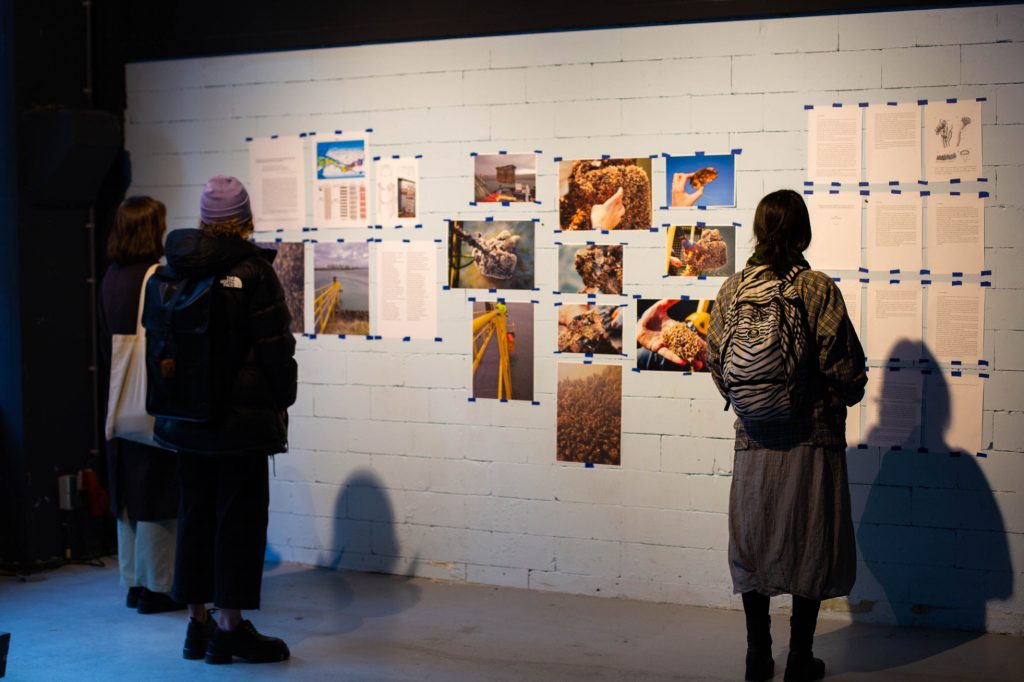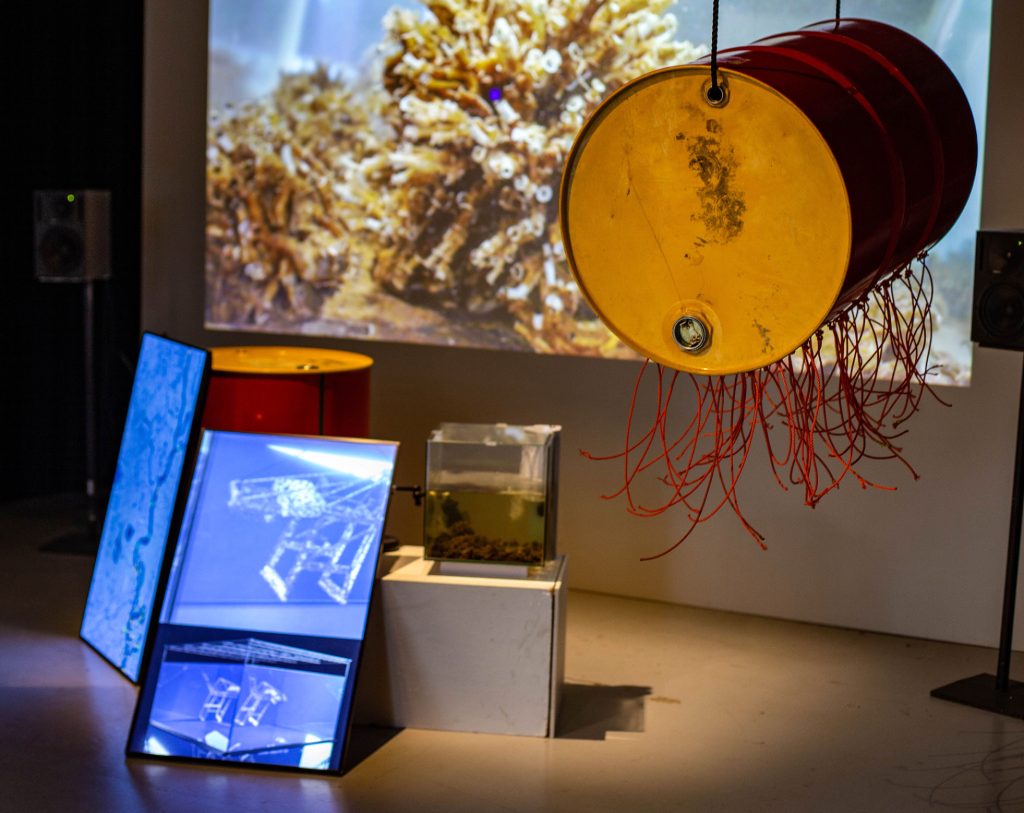‘Zo zal het blijven, boten en water
Aan de kaai van mooi Rotterdam
Zo is het nu en zo is het later
‘T Is toch de trots van ons Rotterdam’
‘This is how it will be, boats and water
On the quayside of fine Rotterdam
This is how it’s now and how it will be later
It’s the pride of our Rotterdam’
‘This is how it’s now and how it will be later…’ chants the old sailor’s song ‘De havens van Rotterdam’ (‘The Port of Rotterdam’). These simple lines marked a breakthrough for Mark IJzerman in his development phase for the artwork that will conclude his S+T+ARTS residency at V2_Lab. When we last spoke, IJzerman had collected an impressive amount of information on the history of the Rotterdam port and one of its most recently added residents: the Australian tubeworm. Three events (called ‘3×3’) hosted by his host organization enabled IJzerman to put prototypes of ideas to the test, and now his concept is as good as ready to be exhibited in V2_Lab September.
‘Before the first 3×3 event, I pondered how to bring the human dimension into the story of the harbor and the tubeworm, for both are elusive in scale: the port is too big and the tubeworm too small’, remembered IJzerman. Fellow artist Maurice de Bruijne suggested adding a ritual element ‘like a cellist or a brass band accompanying the placement of a sculpture in the water’. While IJzerman remained unconvinced that a cellist or brass band would tie in well with the narrative, the conversation prompted him to look up shanty choirs and its songs. The lyrics incanting the port’s continuity offered a poetic contradiction with the urgency for change that came apparent in his research.

A straightforward setup
For the first 3×3 event, IJzerman decided to assemble several elements from his research to see how they would work together. A fish tank facilitated a physical introduction with the tubeworms. Behind it, three screens showed different narratives: the first played a video of a shanty choir singing the nostalgic song ‘De havens van Rotterdam’, the second contained live footage from the port with its playback speed manipulated, and the last one showed a 3D visualization of objects overgrown by tubeworms. The simple setup presented elements from the past, present and possible future in a very straightforward manner. Perhaps too straightforward, ‘I learned from this evening that the elements needed to clash more’, said IJzerman.
Overgrown oil drums
Envisioning a sculptural element, IJzerman asked his audience which object they would like to see overgrown with tubeworms. ‘Most answers were downright cheesy, like a dollar sign referring to the economy’. He himself was excited by the idea to place something large in the water like a crane, to let its resulting blanket of tubeworm reefs compete with the vastness of the harbor. This idea soon ran aground because of its expenses and practical manageability: ‘to arrange such a project, you would have to be Jeff Koons’. He opted for oil drums instead, which are ‘still relatively large’ and a clear reference to economic growth and Shell’s influence in the port. He prepared them in the manner of biologist Peter Paalvast who designed hula’s, constructions of nylon threads that suit the tubeworm’s living conditions so they attach themselves easily to the barrel.


The oil drums -yet to be overgrown- played an important role in IJzerman’s second prototype, with the video screens placed playfully against it. This scenography facilitated more of a relationship between the different elements. The tubeworm was also featured more prominently, with a magnified livestream filming the fish tank, and IJzerman decided to incorporate his research by hanging scientific papers and illustrations on a wall. ‘I could tell the history of how the Rotterdam waterway was dammed up, flooded and deepened, while pointing at the wall like a crazy scientist’.
A sailor’s party
Evaluating, IJzerman drafted a list of things that resonate with the public: the elements of the ritual, (economic) growth, just as the contradictions of infrastructure versus human, past and future, and the conveyance of a sense of scale. People did on the other hand hardly respond to data. ‘There are so many scientists and start-ups working on regeneration of biodiversity in port areas already, I soon decided not to propose another solution but rather to influence the ideas about it. Usually, I am quite a technological creator but for this project I felt that an emotional dimension could offer visitors more.’

He found the human layer in the shape of the Barend Fox shanty choir of Rotterdam. All its members had previously worked in the port and – once IJzerman managed to convince them of his project – proved to be a valuable source of personal observations about its evolution. In their former job, they were part of the dream of turning Rotterdam into a world city. Reviving this spirit of progressivity by singing an adaption of the ‘Havens van Rotterdam’, they evoke reflection on all the complications that this vigour brought about.
IJzerman chose three lead vocalists that he recorded separately: ‘With just three men it becomes fragile. Their song is an intangible heritage which is disappearing, just like our current concept of the port’. As a thank you, during the presentation of his last prototype IJzerman prepared a reception with old-school Dutch snacks for which the full choir performed. ‘Making a connection with the local community was essential for me’.
During his development phase, the presentations of prototypes allowed IJzerman to iterate towards the artwork that will conclude his residency. While the saylor’s song can guide us to the downbeat conclusion that our urge for economic growth had negative implications no one oversaw, hope can be found in the form of the tube worm that worked with precisely these side-effects to create a habitable environment for itself and forother organisms. In the subtleties of this David versus Goliath-dynamic between the tubeworm and the port, IJzerman sees plenty opportunities for more artworks: ‘I am far from finished with this, this will form a new line in my work’.

